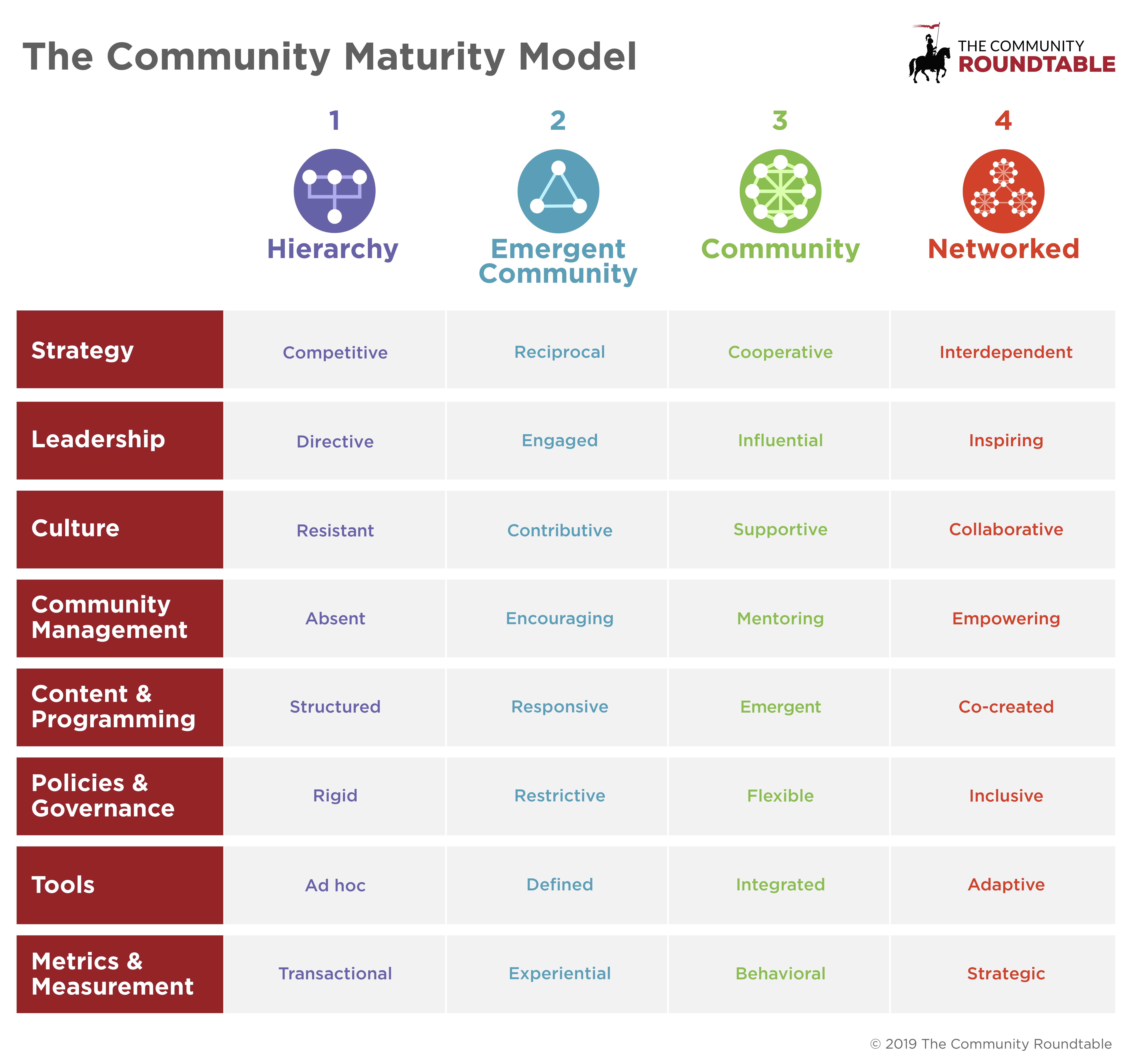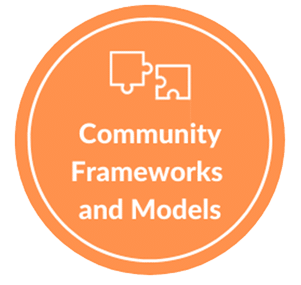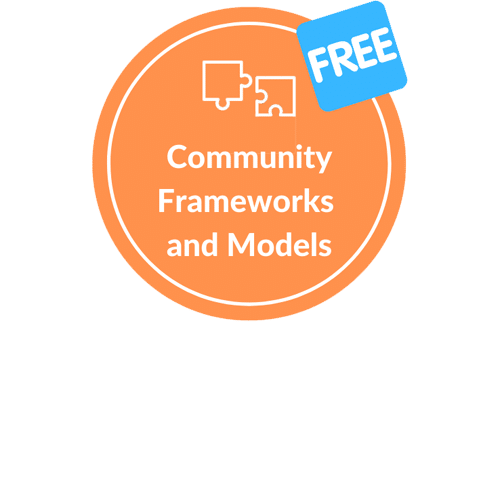We developed the Community Maturity Model™ (CMM) in 2009 to help organizations understand, plan for and assess the performance of community and social business initiatives. In studying communities and organizations for a decade, we now have a much better sense of what each of those milestones looks and feels like and have updated the Community Maturity Model accordingly.
Community professionals use Community Maturity Model™ both as a community management checklist and as an organizational roadmap. At The Community Roundtable, we use it to organize our research, our curated content, and our training services so that our audience can easily connect the dots and use our research and content in their strategic planning.
This model articulates two concepts required to advance the business of community.
Download a high-res version of the Community Maturity Model™ here.
 Community Maturity Model by The Community Roundtable is licensed under a Creative Commons Attribution-NonCommercial-NoDerivatives 4.0 International License. Based on a work at https://communityroundtable.com/what-we-do/research/community-maturity-model/.
Community Maturity Model by The Community Roundtable is licensed under a Creative Commons Attribution-NonCommercial-NoDerivatives 4.0 International License. Based on a work at https://communityroundtable.com/what-we-do/research/community-maturity-model/.
First published in 2009, the Community Maturity Model™ is widely used today by community professionals to:
Evaluate and assess their organization’s social and community efforts through gap analysis
Understand the expertise and skill sets required for successful community development
Develop a roadmap to advance community efforts in
their organization
Educate and manage expectations
of executives, advocates, and colleagues
Create training for those tasked with working on social strategy and community management
While the maturity stages are a continuum, there are behaviors that are becoming established best practices for particular stages. For example, Emergent Community suggests that there is some usage and experimentation of social tools and techniques is going on – whether formally or informally. Having defined budgets, community management resources, and policies are a hallmark of having an established community. And having a networked approach suggests that there is integration between employee, customer, partner, and even competitor constituencies and that the company operates its corporate strategy with a networked perspective. We segment community management content in this way for a few reasons.
By separating and articulating the various competencies and stages, the CMM provides good expectation setting for both community managers and their organizations. Additionally, the CMM serves as a model of its cross-functional nature and included competencies typically handled by a variety of functional groups, all of which need to participate in order to have a mature community management discipline. By providing a model for developing and executing a social initiative we hope to provide concrete examples and tools for each part of the process and as the community management discipline matures, our guidance will become more specific and evidence-based
The Community Maturity Model™ informs how we organize our research, training, and The Network programming.
See how others in our network view and use the Community Maturity Model™:
- Assessment: The State of Social Media at the University of Denver
- ATKearney's Insight on Digital Marketing: Don't Miss the Forest for the Trees
- Research framework: Practice Makes Perfect and Research from the Community Roundtable
In about 10 minutes you can assess your community program to better understand your community management maturity. You'll receive a scorecard with your maturity for each of the eight competencies in the Community Maturity Model.
The Community Score allows you to identify where to focus resources for maximum ROI on your community efforts.
This short, on-demand course gives learners a comprehensive overview of the four frameworks and models that form the foundation of successful community programs.
Complete this free course in The Academy to receive your certification in Community Models and Frameworks. Learn more or start now.





